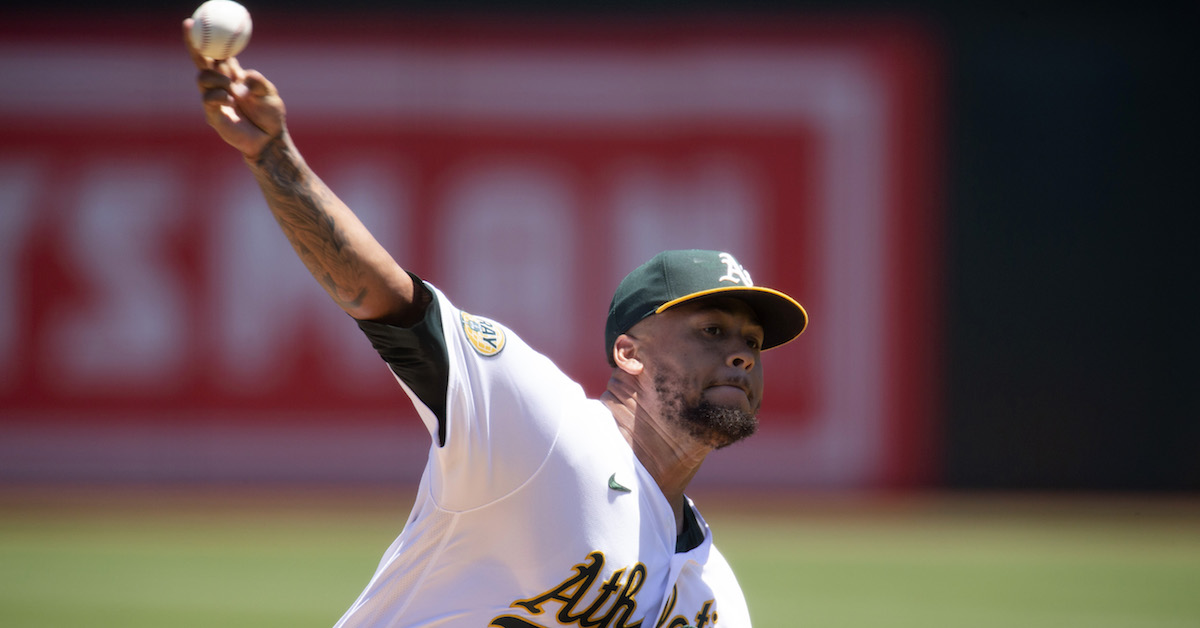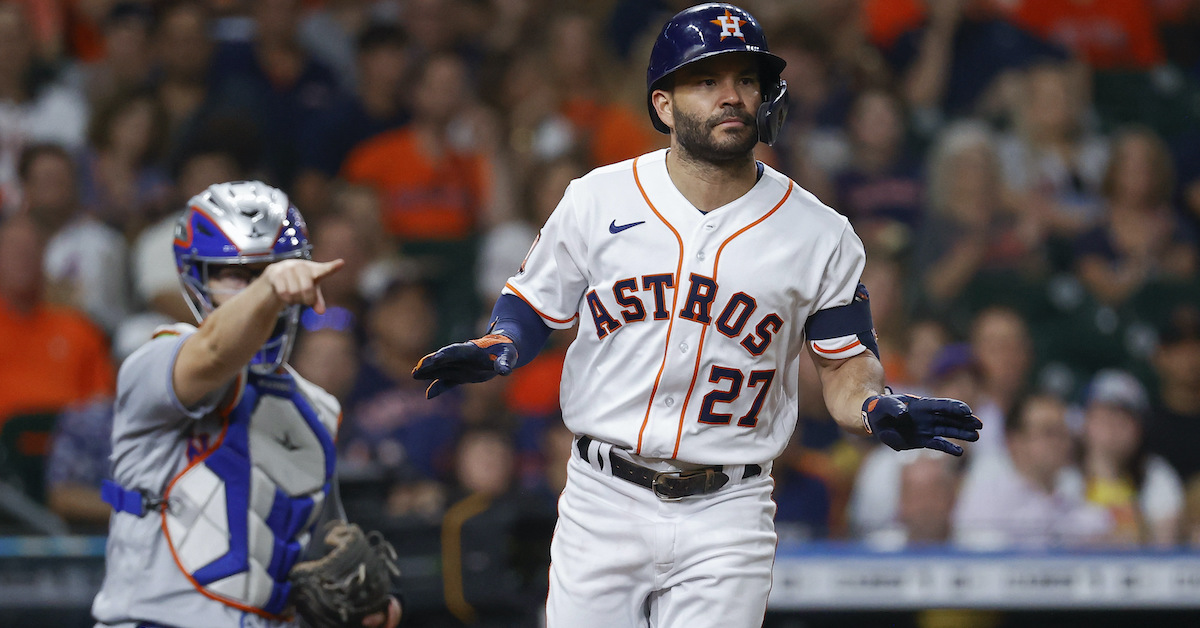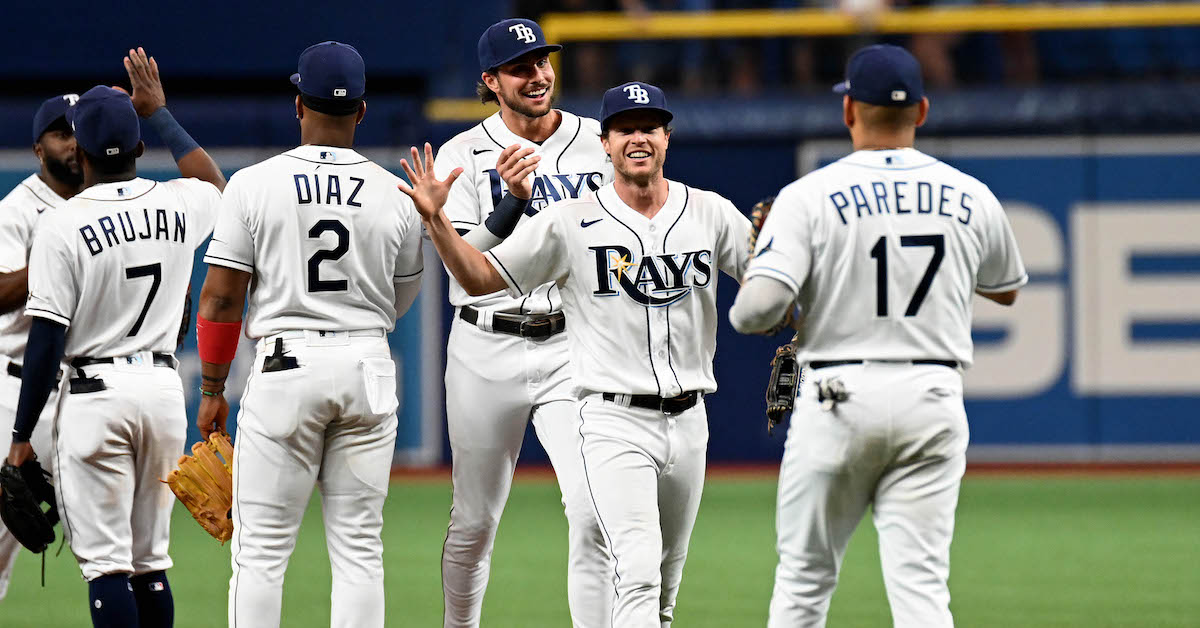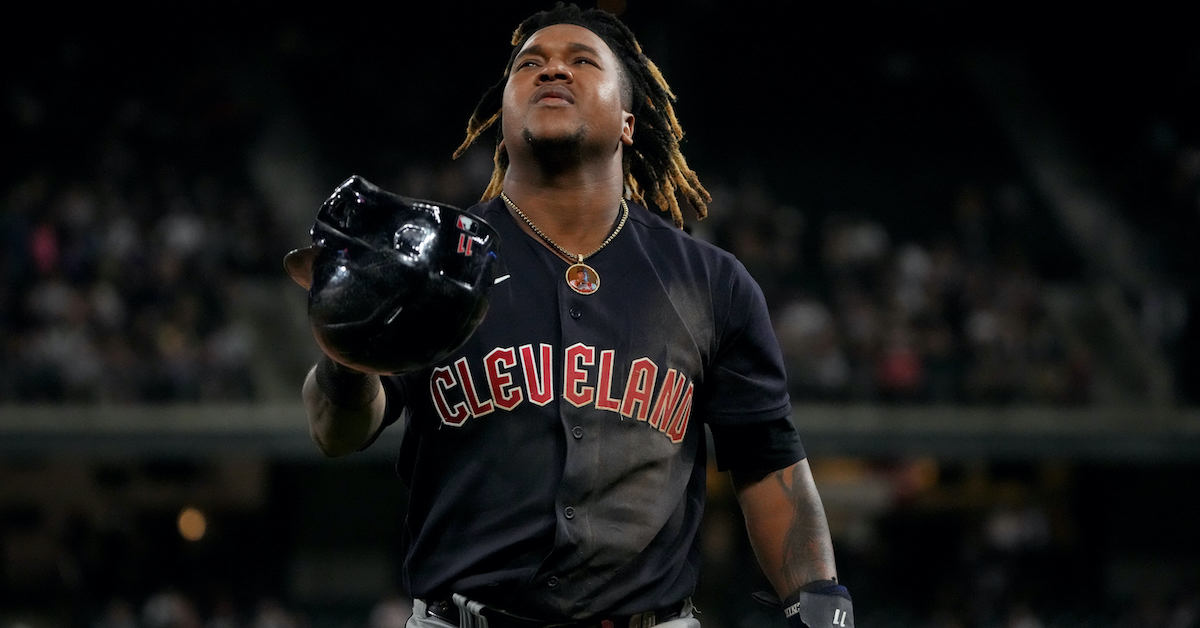Frankie Montas Stands Alone

Frankie Montas took the mound to start the eighth inning yesterday afternoon with a chance at history. He hadn’t allowed a hit all game, and looked to be picking up steam; his last pitch of the seventh inning hit 99 mph on the stadium gun, one of his hardest pitches of the day. He cut down the first two batters of the eighth in short order – four pitches, two grounders – leaving him only four outs from the first no-hitter of his career.
Montas is one of the best pitchers in baseball. A year ago, he put together his first full season, 32 starts of 3.37 ERA excellence. This year, he’s cleaning things up around the edges: fewer walks, more grounders, and more innings per start. His 3.21 ERA, 3.15 FIP, and 2 WAR are all in the top 20 among starting pitchers.
One small downside: Montas plies his trade in Oakland. That 2 WAR is more than every other player on the A’s has amassed combined (that rest-of-roster total comes in at 1.8 WAR, if you’re keeping score at home). Baseball is a team sport, even if many of the interactions feel individual; Montas sports a 3-7 record despite his sterling numbers. Read the rest of this entry »









